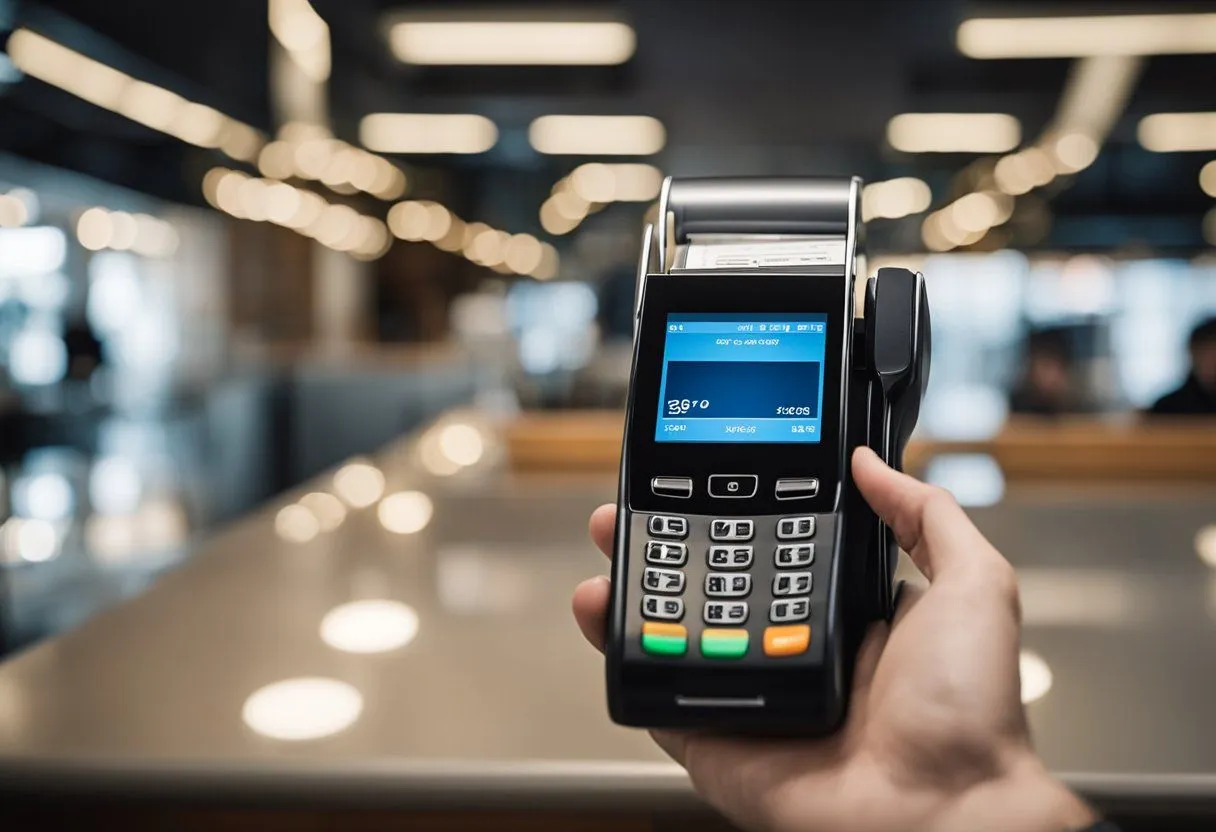Contactless Payments: The Convenient and Secure Future of Transactions
Contactless payments are becoming increasingly popular as a convenient and secure way to make transactions. With the rise of mobile payment apps and contactless cards, consumers can now pay for goods and services without the need for cash or physical contact with a terminal.
One of the main benefits of contactless payments is their convenience. Consumers can simply tap their phone or card on a terminal to make a payment, without the need to enter a PIN or sign a receipt. This makes the payment process faster and more streamlined, reducing queues and wait times for both customers and merchants.
In addition to convenience, contactless payments are also considered to be more secure than traditional payment methods. With encryption and tokenization technology, the consumer’s payment information is kept safe and secure, reducing the risk of fraud and identity theft. As a result, contactless payments are becoming the preferred method of payment for many consumers and merchants alike.
The Evolution of Contactless Payments

Contactless payments have come a long way since their inception in the early 2000s. The technology was first introduced in South Korea and Japan, but it wasn’t until 2007 that contactless payments made their way to Europe with the introduction of the Oyster card for London’s public transportation system.
The first contactless payment card was launched by Barclaycard in 2008, and by 2012, contactless payments had become a mainstream payment method in the UK. In the US, contactless payments were slower to catch on, with the first contactless payment card being introduced in 2015.
However, the COVID-19 pandemic has accelerated the adoption of contactless payments worldwide, as consumers seek out safer and more convenient payment options. In fact, many merchants have started to encourage contactless payments by setting higher limits for contactless transactions and accepting mobile payments.
Today, contactless payments are available in various forms, including contactless cards, mobile wallets, wearables, and even biometric payments. As technology continues to evolve, it’s likely that we’ll see even more innovative and secure ways to make contactless payments in the future.
How Contactless Payments Work

Contactless payments are a convenient and secure method of making transactions without the need for physical contact between the payment device and the payment terminal. This technology has been around for a while, but it has become increasingly popular in recent years due to its ease of use and the COVID-19 pandemic.
The Technology Behind
Contactless payments use Near Field Communication (NFC) technology, which allows two devices to communicate wirelessly when they are in close proximity. The payment device, such as a smartphone or a card, contains an NFC chip that sends payment information to the payment terminal when it is tapped or waved near it. The payment terminal then processes the payment and sends a confirmation back to the payment device.
Security Measures
Contactless payments are designed to be secure and protect the user’s financial information. Some of the security measures used in contactless payments include:
- Tokenization: This is a process that replaces the user’s payment information with a unique code that cannot be used for any other transaction. This makes it more difficult for hackers to steal the user’s financial information.
- Encryption: Contactless payments use encryption to protect the user’s financial information when it is being transmitted between the payment device and the payment terminal.
- Transaction Limits: Most contactless payments have transaction limits to prevent fraud. If a transaction exceeds the limit, the user will be asked to enter a PIN or sign to confirm the payment.
In conclusion, contactless payments are a convenient and secure way of making transactions. They use NFC technology and have several security measures in place to protect the user’s financial information.
Benefits of Contactless Payments

Contactless payments have become increasingly popular in recent years due to their convenience, speed, and safety. Here are some of the benefits of using contactless payments:
Convenience
One of the biggest advantages of contactless payments is their convenience. With contactless payments, customers no longer need to carry cash or wait in long lines to pay for their purchases. Instead, they can simply tap their card or mobile device on the payment terminal and the transaction is complete. This is especially useful for small transactions such as buying a coffee or a snack, where using cash or a traditional card can be time-consuming.
Speed
Another benefit of contactless payments is their speed. Transactions can be completed in seconds, which is much faster than using cash or traditional cards. This is particularly important for businesses that have high volumes of customers, such as fast-food restaurants or convenience stores. Faster transactions mean shorter lines and happier customers.
Safety
Contactless payments are also considered safer than traditional payment methods. With contactless payments, customers do not need to hand over their card to the cashier, which reduces the risk of card skimming or fraud. Additionally, most contactless payments are protected by encryption technology, which makes it difficult for hackers to intercept and steal customer data.
In summary, contactless payments offer many benefits, including convenience, speed, and safety. As more businesses adopt this technology, it is likely that contactless payments will become the norm for everyday transactions.
The Future of Contactless Payments
Contactless payments have already proven to be a game-changer in the world of transactions. With the increasing adoption of contactless payment methods, it is clear that this trend will continue to grow and evolve in the future.
Trends
One of the most significant trends in contactless payments is the integration of biometric authentication. With the use of fingerprint or facial recognition, contactless payments can become even more secure and convenient. This trend is already being adopted by major players in the industry, such as Apple Pay and Samsung Pay.
Another trend is the expansion of contactless payment methods beyond traditional credit and debit cards. Wearable technology, such as smartwatches and fitness trackers, are being equipped with contactless payment capabilities. This opens up new possibilities for seamless and convenient transactions in various contexts, such as fitness centers and amusement parks.
Challenges and Solutions
Despite the many benefits of contactless payments, there are still some challenges that need to be addressed. One of the main concerns is security, as contactless payments can potentially be vulnerable to fraud and hacking. However, as mentioned earlier, the integration of biometric authentication can greatly enhance security.
Another challenge is the need for widespread adoption and acceptance. While contactless payment methods are becoming more common, there are still many businesses and individuals who are hesitant to adopt this technology. To address this challenge, it is important to continue educating people on the benefits and safety of contactless payments.
In conclusion, the future of contactless payments looks promising, with new trends and solutions emerging to address challenges. As more and more people adopt this technology, it will become increasingly convenient and secure for everyone involved in transactions.



